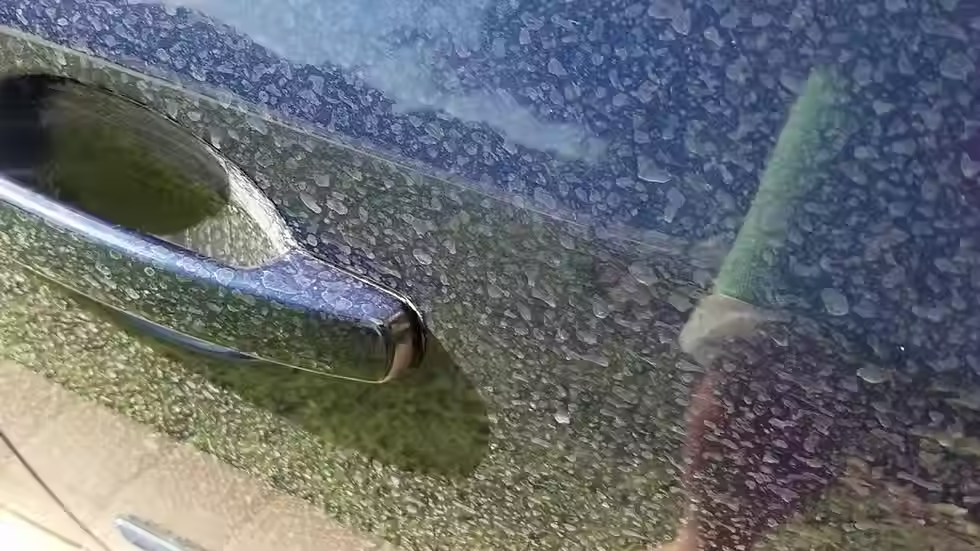Water Spot Removal: How Professionals Restore Your Paint
- cristianaguilar006
- Jul 1
- 2 min read

Water spots may seem harmless at first, but if left untreated, they can permanently damage your vehicle’s paint. Commonly caused by hard water, rain, or sprinklers, these mineral deposits bake into the clear coat under the sun, leaving behind unsightly marks and etched surfaces. Professional water spot removal goes beyond washing—here’s how it works and why it matters.
What Causes Water Spots?
Water spots form when moisture containing minerals (like calcium and magnesium) dries on your car’s surface. As the water evaporates, the minerals are left behind. Over time, these deposits can:
Etch into your paint
Create dull patches
Stain glass and chrome
Compromise protective coatings like wax or sealant
Types of Water Spots
Type I – Mineral Deposits: The most common type, removed with proper cleaners.
Type II – Etching: Caused when mineral deposits begin to burn into the clear coat.
Type III – Bonded Contaminants: Usually combine with other particles like road grime or sap.
Step-by-Step: How Professionals Remove Water Spots
Step 1: Surface Inspection
Technicians assess the paint condition to determine the severity and type of water spots.
Step 2: Wash and Decontaminate
The vehicle is washed to remove loose dirt, followed by a clay bar treatment to eliminate bonded contaminants.
Step 3: Apply a Water Spot Remover
Specialized acidic or pH-balanced products are applied to break down mineral residue without harming the clear coat.
Step 4: Paint Correction (If Needed)
If etching is present, machine polishing or light compounding is used to level the clear coat and restore gloss.
Step 5: Protect the Paint
Once the surface is clean and corrected, a wax, sealant, or ceramic coating is applied to shield it from future spots.
Can You Remove Water Spots at Home?
Light mineral deposits can sometimes be removed with vinegar, detailing sprays, or over-the-counter water spot removers. However, if spots have etched the clear coat, DIY methods won't be enough—and aggressive scrubbing can make things worse. That’s when professional treatment is essential.
Tips to Prevent Water Spots in the Future
Dry Your Car Promptly: Never let water air-dry after washing or rain.
Avoid Sprinkler Zones: Park away from hard water sources.
Use Filtered Water for Washing: Deionized or softened water minimizes mineral buildup.
Apply Paint Protection: A wax or ceramic coating provides a barrier against contaminants.
Keep a Drying Towel in the Trunk: Useful after sudden rain or accidental splashes.
Water spots aren’t just cosmetic—they can lead to long-term paint damage if ignored. Professional removal restores clarity, protects your vehicle’s finish, and helps maintain that just-detailed shine.


